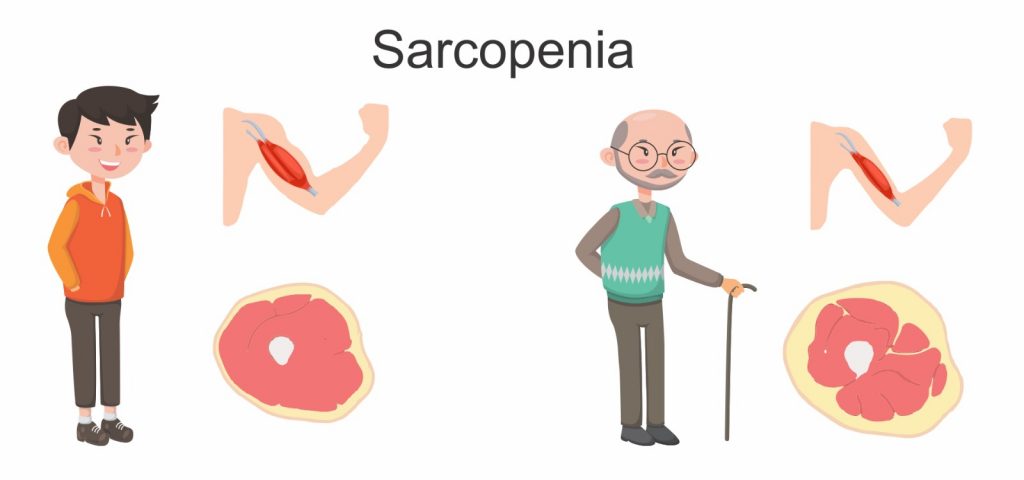Unmasking Sarcopenia: The Silent Muscle Thief
In a country teeming with youth, a silent epidemic is slowly gripping India’s ageing population. Sarcopenia, the age-related loss of muscle mass and strength, is emerging as a significant health concern that demands our immediate attention.
The Hidden Threat
Sarcopenia isn’t just about losing muscle; it’s about losing independence. As our muscles weaken, simple tasks like climbing stairs or carrying groceries become Herculean challenges. But who’s at risk, and why should you care?
India is Vulnerable: Who is in the Crosshairs?
The elderly are at risk: With India’s 60+ population expected to reach 193.4 million by 2031, sarcopenia is poised to affect millions.
Chained to the desk: Our IT hubs are breeding grounds for sedentary lifestyles, accelerating muscle loss.
Nutritionally Challenged: Chronic malnutrition, still prevalent in parts of India, sets the stage for early-onset sarcopenia.
How Sarcopenia Takes Hold
Imagine your muscles as a savings account. As you age, you’re withdrawing more than you’re depositing. But it’s not just time that’s robbing your muscle bank:
Sedentary lifestyles
Protein-deficient diets
Hormonal changes (menopause and andropause)
Chronic diseases (diabetes and sarcopenia: a toxic duo)
Breaking the Cycle: Prevention is Better Than Cure
Here’s the good news: sarcopenia isn’t inevitable. Here’s your action plan:
Pump It Up: Resistance training is your new best friend. Start with bodyweight exercises and gradually increase intensity.
Protein Power: Aim for 1-1.2 grams of protein per kg of body weight daily. Lentils, lean meats, and dairy are good sources of protein.
Vitamin D: As Dr Kannan advises, soak up some sun or consider supplements after consulting your doctor.
Balance Act: Incorporate balance exercises to prevent falls, a common sarcopenia complication.
What data reveals
While comprehensive pan-India data on sarcopenia is still emerging, recent studies paint a concerning picture:
A 2022 study in the Journal of Family Medicine and Primary Care found sarcopenia prevalence of 30.8% among community-dwelling older adults in North India.
Research from AIIMS, New Delhi, suggests that sarcopenia might affect up to 50% of Indians over 80.
Yoga for Sarcopenia
Can India’s yogic traditions offer solutions? Emerging research suggests yes:
Surya Namaskar: This dynamic sequence engages multiple muscle groups, promoting strength and flexibility.
Chair Yoga: Perfect for those with limited mobility, it builds core strength and improves balance.
Pranayama: Deep breathing exercises like Anulom Vilom may improve oxygen delivery to muscles, potentially slowing muscle loss.
A Call to Action
Sarcopenia isn’t just an individual health issue; it’s a societal challenge. As India ages, we need:
Increased awareness campaigns
Integration of sarcopenia screening in primary healthcare
Research funding to understand sarcopenia’s unique manifestations in the Indian population
Every step you take, every weight you lift, is a deposit in your muscle bank. Start investing in your strength today – your future self will thank you.
Sources:
United Nations Population Fund. (2017) India Ageing Report – 2017
Assessment of nutritional status of elderly and its correlates. Journal of Family and Community Medicine
Sarcopenia and type 2 diabetes mellitus: a bidirectional relationship. Diabetes, Metabolic Syndrome and Obesity: Targets and Therapy
Exercise Interventions for the Prevention and Treatment of Sarcopenia. A Systematic Umbrella Review. The Journal of Nutrition, Health & Aging
Yoga respiratory training improves respiratory function and cardiac sympathovagal balance in elderly subjects: a randomised controlled trial.


